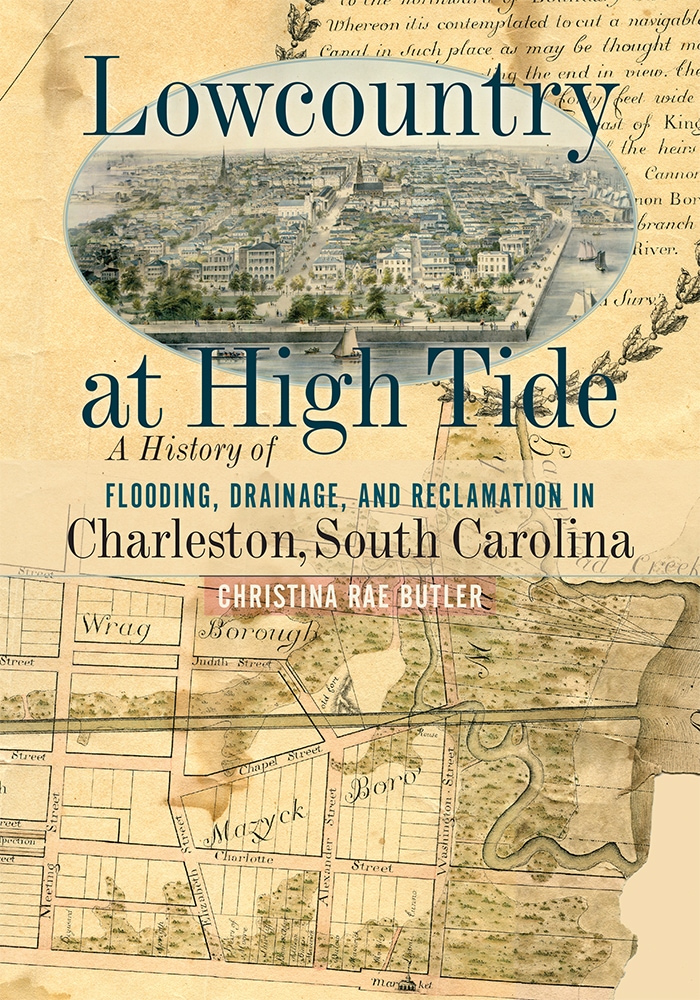
Size: 7 x 10
Pages: 288
Illustrations: 10 b&w photos, 15 illustrations, 25 maps
Christina Rae Butler
The inclusion of this book in the Open Carolina collection is made possible by the generous funding of
"Using archival specifications and bid documents, Lowcountry at High Tide provides an excellent case study for the material history of construction and humanizes city-building as both personal and bodily practice. Butler interleaves a larger citywide narrative with portraits of hard work in moments of crisis... the reader can appreciate Butler's technical skill in illuminating what the stakes really were."—Arris
"An important reference tool for historians of coastal cities and lovers of Charleston, Lowcountry at High Tide builds on urban infrastructure history... Students and other readers of Butler's case study of Charleston will find lots of intellectual and archival breadcrumbs leading to research opportunities into additional topics relevant to contemporary life in the midst of accelerating climate change and global warming."—The Public Historian
"Butler's work is impeccably researched, drawing from maps, plats, city records, local newspapers, and contract daybooks. This book offers scholars interested in Charleston's built environment a detailed, block-by-block account of the city's history focused on the nitty-gritty of sewers, street fill, and storm drains. . . . More important, Lowcountry at High Tide provides important historical context for understanding Charleston's relationship with land and water. Given the environmental challenges the city faces today, this is perhaps the book's greatest contribution."—The Journal of Southern History
"Lowcountry at High Tide is a much-needed study of landmaking in Charleston that also includes the related topics of drainage and filling existing land. Using public records, Christina Butler has traced Charlestonians's efforts to create raised, dry - and healthy, attractive, economically viable - land from their original low, inlet-laced peninsula."—Nancy Seasholes, author of Gaining Ground: A History of Landmaking in Boston
"Christina Butler describes a growing but low-lying city where the ground surface was constantly in flux. The filling and draining that characterized Charleston from its earliest days had both short-term and long-range consequences for the livability of the peninsula, and for the archaeological record of these processes. Some may surprise you."—Martha Zierden, The Charleston Museum
"A new and compelling perspective on the history of Charleston. Synthesizing primary documents, maps, and property records, Butler painstakingly chronicles 340 years of Charleston's physical transformation through filling and drainage projects. More broadly, this book offers a much-needed historical framework for understanding the flooding issues currently facing Charleston and other coastal cities."—Jon Bernard Marcoux, Clemson University
"As low-lying coastal cities around the world face more and bigger floods, Lowcountry at High Tide makes valuable contributions in illuminating the uneven legacy of Charleston's land building and drainage works."—Geographical Review
"In Lowcountry at High Tide, Christina Rae Butler examines the seemingly mundane histories of filling, drainage, and land reclamation to understand how and why residents have shaped Charleston's physical geography over time. [. . .] Her account is meticulously researched and highly detailed."—Preservation Education and Research
2020 Finalist, South Carolina Historical Society's George C. Rogers Jr. Award for the best book of South Carolina history
Copyright 2026
Website By Morweb.org